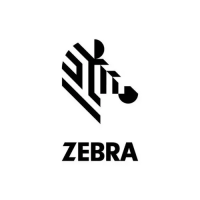
Do you have a question about the Zebra 105SL Plus and is the answer not in the manual?
| Weight | 50 lbs / 22.7 kg |
|---|---|
| Humidity | 20-85% non-condensing |
| Print Method | Thermal Transfer |
| Resolution | 203 dpi (8 dots/mm) |
| Max Print Width | 4.09 inches / 104 mm |
| Max Print Speed | 12 inches per second / 305 mm per second |
| Memory | 16 MB SDRAM, 8 MB Flash |
| Media Width | 0.79 inches / 20 mm to 4.5 inches / 114 mm |
| Media Thickness | 0.003 inches / 0.076 mm to 0.012 inches / 0.305 mm |
| Media Types | Continuous, die-cut, black mark |
| Ribbon Width | 2.00 inches / 51 mm to 4.33 inches / 110 mm |
| Ribbon Length | 1476'/450 m |
| Connectivity | Parallel, Serial |
| Optional Connectivity | Ethernet, Wireless |
| Power Requirements | 90-264 VAC; 48-62 Hz |
| Operating Temperature | 40°F to 105°F / 5°C to 40°C |
| Storage Temperature | -40°F to 140°F / -40°C to 60°C |
General information about compliance with regulations and standards.
Details compliance with FCC rules for radio frequency emissions.
Details compliance with Canadian regulations for digital apparatus.
Identifies the intended audience for the user guide.
Explains the structure and sections of the user guide.
Explains symbols, formatting, and advisory words used in the document.
Identifies and illustrates the main parts of the printer.
Describes the printer's control panel, buttons, and indicator lights.
Explains the printer's display and how to navigate through menus.
Provides instructions on unpacking, storing, and shipping the printer safely.
Details environmental and physical conditions for printer placement.
Outlines available connection options for linking the printer to a computer.
Specifies requirements for data cables to ensure proper connection and minimize noise.
Guides users on safely connecting the printer to a power outlet.
Lists requirements for the printer's power cord for safety and performance.
Instructions for installing an optional protective cover for the control panel.
Explains different print modes (Tear-Off, Peel-Off, Rewind, Cutter) and their uses.
Step-by-step instructions for correctly loading thermal transfer ribbon into the printer.
Detailed guide on how to load various types of media (roll, fanfold) into the printer.
Overview of methods to change printer settings using ZPL, control panel, or web pages.
Configuration options for print darkness, speed, tear-off position, and print mode.
Tools and features for printer upkeep, monitoring, and diagnostics.
Configuration options for network connectivity, IP settings, and print servers.
Options for changing the printer's display language and control characters.
Configuration for selecting the appropriate media sensor.
Configuration for communication ports like parallel and serial interfaces.
Procedure for adjusting sensor sensitivity for accurate media detection.
Instructions for safely removing used ribbon from the take-up spindle.
Steps for removing media or liner from the rewind spindle.
Guides on adjusting the upper and lower transmissive media sensors.
Procedure to align the lower media sensor with the upper sensor.
Instructions for adjusting printhead pressure and toggle position for optimal print quality.
Information on replacing worn printer parts like printhead and platen roller.
Guidance on obtaining genuine Zebra replacement parts.
Information on proper disposal and recycling of printer parts.
Details on lubrication requirements for the printer.
Recommended schedule and methods for cleaning printer components.
Steps for cleaning the printer's outer surfaces.
Instructions for cleaning the internal media compartment.
Procedure for cleaning the printhead and platen roller for optimal print quality.
Guide on cleaning various sensors on the printer.
Steps for cleaning the snap plate when it gets dirty or sticky.
Instructions for cleaning the cutter blade to ensure clean label cutting.
Identifies common printing problems, their causes, and solutions.
Explains error messages displayed on the control panel and their resolutions.
Lists issues related to printer calibration and how to resolve them.
Addresses issues with data transfer between the printer and host computer.
Troubleshooting steps for issues related to ribbon usage and detection.
Covers various other printer issues not fitting into other categories.
Information on self-tests and diagnostic tools for printer condition assessment.
Details the automatic self-test performed when the printer is powered on.
Instructions for performing the CANCEL self-test to print configuration labels.
Guide on using the PAUSE self-test for printhead adjustments and testing.
Procedure for using the FEED self-test to determine optimal print darkness and speed.
Tool for checking interconnection issues by printing received data.
Using sensor profile images to troubleshoot media detection issues.
Lists standard and optional features available for the printer.
Details the built-in capabilities and components of the printer.
Lists features that can be added to the printer as upgrades.
Describes the capabilities and features of the ZPL programming language.
Lists supported bar code symbologies and their specifications.
Covers physical, electrical, and environmental specifications of the printer.
Provides dimensions and weight of the printer.
Details power requirements and consumption.
Specifies temperature and humidity ranges for operation and storage.
Technical details regarding printhead resolution, dot size, and print speeds.
Technical details about label dimensions, thickness, and registration.
Technical details regarding ribbon width, length, and core diameter.